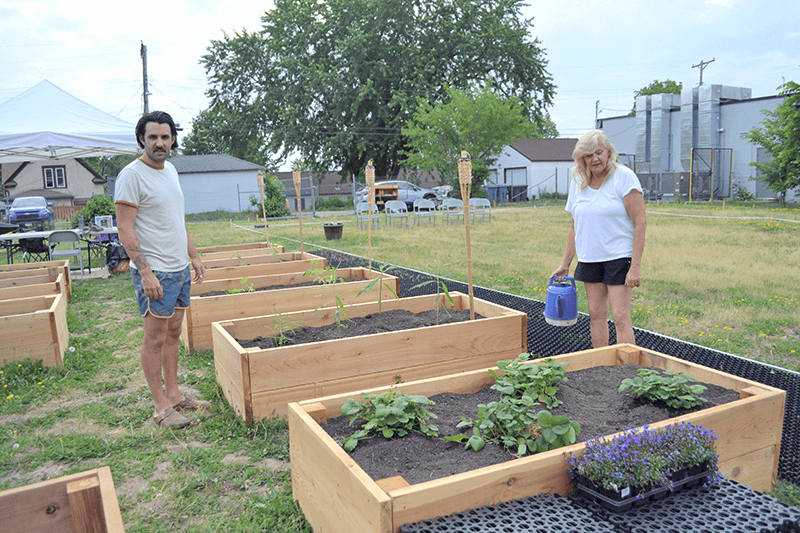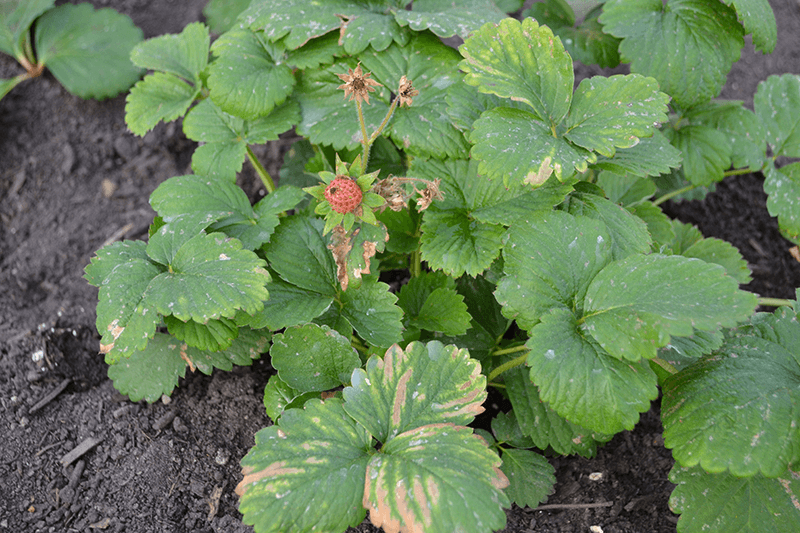It looks as if they have a long row to hoe, but volunteers are gradually turning a long-vacant lot on 28th Ave. NE and Johnson St. NE into a market garden, with the blessing of the City of Minneapolis. Armed with shovels and a $48,000 grant from the Minnesota Dept. of Agriculture, they’ve made quite a bit of progress since last month, when they first began building boxes for raised growing beds.
The raised beds will be used to grow food that will be donated East Side Neighborhood Services, the Senior Food Shelf on 18th and Central and Gifts for Seniors. Tomatoes, peppers, strawberries and cucumbers are already growing there, as is ginger.
The raised beds were considered necessary by the Audubon Park Neighborhood Association (ANA), which is building the garden. The garden sits on the site of an old gas station, and soil tests were conducted this past winter. Although contaminants in the soil did not meet the Minnesota Pollution Control Agency’s threshold for requiring soil remediation, the group decided to eliminate that worry by bringing in fresh organic dirt and growing crops in boxes. (Raised beds have another advantage – the soil warms faster in the spring, so you can plant earlier.)
A short way away from the raised beds, carefully mounded windrows of soil sit on top of a fabric weed barrier. These will be planted by a pair of urban farmers, Max Hyberger and Elliott Bussey of B&H Farms, who will also bring in fresh sweet corn from their farm near Litchfield, Minn., when it’s ready for harvest. They’ll be selling on Saturdays, 9 a.m.-noon.
Closer to the fence line on 28th Ave. NE is a plot of ground that will be sowed Saturday, June 17 with native Minnesota plants by Metro Blooms. The plants will be used to attract pollinators and to filter rainwater on the site. Volunteers are calling it the H2Oasis.
Speaking of water, ANA worked with next-door neighbor Nail Ninja to bring water to the garden. A splitter was installed, as was a separate meter so ANA can track how much water it uses and its costs, while Nail Ninja’s water supply will remain unaffected.
Flowers have been planted along Johnson St., and a pair of bougainvillea vines have been set inside the fence next to the bus stop with the hope of providing some shade to bus riders. The group also looks forward to growing culinary and medicinal herbs, and possibly plants that could be used to dye fabric.
The garden’s infrastructure will continue to grow throughout the summer. Volunteers are putting down interlocking plastic grids made in Ukraine to create walking paths and a patio for the vendors who come to sell their products at the weekly farmer’s market, set to open June 29. Pathways will enable people in wheelchairs to tend the raised gardens; the patio space could also be used for events such as outdoor movies and community meals.
Also planned is a produce shed with a cantilevered roof, and a tool shed, as well as a greenhouse for starting plants.
It seems like a lot of work to do in a short Minnesota growing season, but ANA board members are confident they’ll get the work done with the help of volunteers. During the heat of the Memorial Day weekend, 30 people showed up “just to move dirt around,” noted ANA Executive Director Deborah Brister. (“And somehow, nobody died!” chimed in ANA President Anne Bechtel.)
Volunteers will be needed throughout the summer to mow, weed-whack, tend plants and water them. A volunteer work schedule will be posted at northeastmarketgarden.org. There’s a volunteer application form on the site; copy and paste it and your answers into an email to deborah@audubonneighborhood.org.
In addition to the grants it has received, ANA is also financing its work by selling brick pavers that can be engraved and will be placed around the garden. 4”x 8” pavers are $100; 8” x 8” bricks are $225. Contact Brister at the above email address for more details.
Deb Brister showed the raised gardens of the Audubon Market Garden to volunteer Ethan Pope. The garden is on the site of the long-vacant lot at 28th Ave. and Johnson St. NE. The Audubon Park Neighborhood Association chose raised beds because the garden sits on the site of an old gas station. Although contaminants are not at concerning levels, the group decided to be extra cautious, and there’s the added benefit that the soil warms faster in the spring and thus is ready earlier for planting. A ripening strawberry from the Market Garden. (Photos by Cynthia Sowden)

